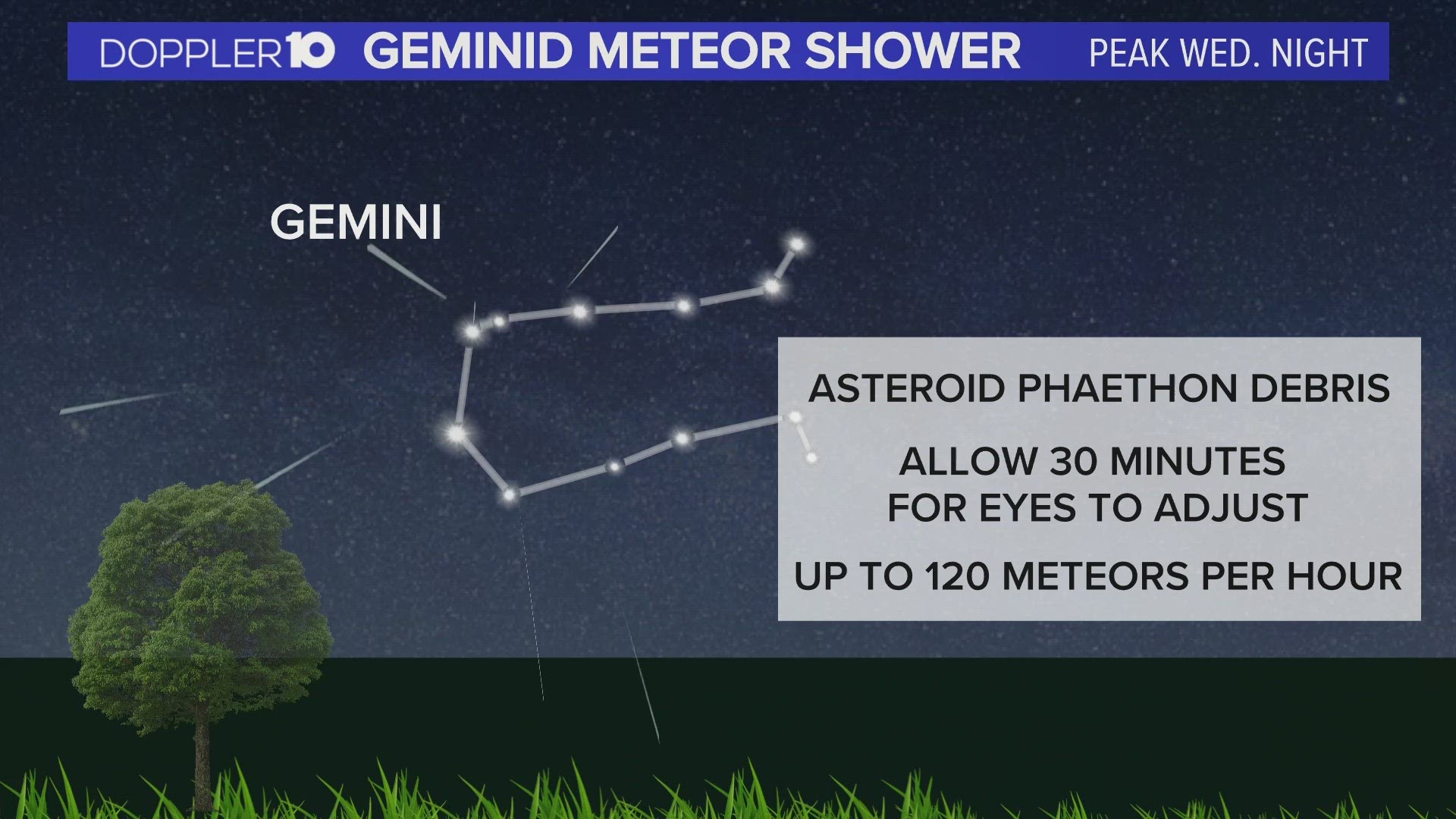WASHINGTON — Stargazers this week will have a front-row ticket to one of the year's best and brightest celestial displays.
The Geminids, an annual meteor shower that peaks during mid-December, is set to be most visible on Wednesday night into Thursday morning.
During peak activity and with clear skies, up to 120 meteors per hour are visible. According to NASA, you may even see a meteor every minute.
This year, conditions are much more favorable for star seekers as the Geminids will peak a day after the new moon - leaving an ideal dark canvas for the starry event.
With little to no competition from the moon's light, the Geminids are expected to fill the night sky with colorful and bright streaks.
Most meteors tend to appear colorless or white, but the Geminids often show a greenish hue, according to NASA. It's considered "one of the best and most reliable annual meteor showers," according to the space agency.
How to watch the Geminids meteor shower?
The Geminids will be visible around the world and are best viewed during the night and predawn hours, NASA says.
As with all meteor showers, favorable weather conditions must be in play to garner the best view of the celestial display. Unlike last year, there will be little to no moonlight in the sky to interfere with the view of the Geminids.
What time is the meteor shower tonight?
Stargazers in the Northern Hemisphere can start seeing meteors as early as 9 or 10 p.m. local time, allowing young ones to experience the light show.
The number of meteors seen increases throughout the night, with some of the best rates around midnight and into the morning twilight hours.
NASA recommends finding a spot away from city lights and bringing a sleeping bag or blanket, depending on winter temperatures in your area.
For an optimal view, lie flat on your back with your feet facing south and look up. Don't worry if you don't spot meteors right away, as it may take up to half an hour for your eyes to adjust to the dark.
Meteors will appear to come from the Gemini constellation, where they get their namesake. However, NASA suggests that viewers should focus on more than just that constellation, as meteors can be seen throughout the night sky.
The point in the sky from which the meteors appear to originate is called a radiant. These "radiants" are constellations that are named as a guide to help stargazers determine which meteor shower they are viewing at the time. It's important to note that these constellations are not the source of the meteors.
Where do the Geminids originate from?
The Geminids, set apart from other meteor showers by their bright, colorful streaks, come from a different source.
Most meteor showers originate from comets, but the Geminids come from an asteroid called 3200 Phaethon. Discovered in 1983 by astronomer Fred Whipple, the small asteroid was named after a Greek mythological figure who drove the sun god's chariot.
Phaethon's status as an asteroid is up for question though as NASA says it could be a "dead comet" or a "rock comet" — an asteroid that gets so close to the sun that the heat scorches off dusty pieces.
Whether a comet or an asteroid, the Geminids originate from Phaethon and are the reason behind the annual celestial event that fills the night with brilliant, colorful streaks.

